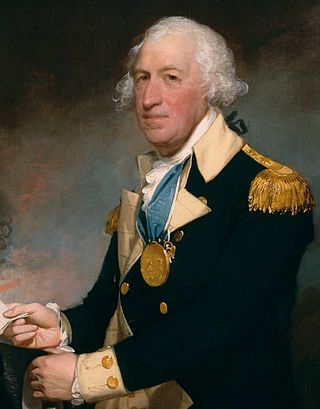
Horatio Lloyd Gates was a British-born American army officer who served as a general in the Continental Army during the early years of the Revolutionary War. He took credit for the American victory in the Battles of Saratoga (1777) – a matter of contemporary and historical controversy – and was blamed for the defeat at the Battle of Camden in 1780. Gates has been described as "one of the Revolution's most controversial military figures" because of his role in the Conway Cabal, which attempted to discredit and replace General George Washington; the battle at Saratoga; and his actions during and after his defeat at Camden.

David Humphreys was an American Revolutionary War colonel and aide de camp to George Washington, a secretary and intelligence agent for Benjamin Franklin in Paris, American minister to Portugal and then to Spain, entrepreneur who brought Merino sheep to America, and member of the Connecticut state legislature. He also was a prolific poet and author and a member of the Hartford Wits. As secretary and speechwriter to George Washington during his administration, Humphreys was the nation's first U.S. presidential speechwriter.

Thomas W. Knowlton was an American patriot who served in the French and Indian War and was a colonel during the American Revolution. Knowlton is considered America's first Intelligence professional, and his unit, Knowlton's Rangers, gathered intelligence during the early Revolutionary War. Knowlton was killed in action at the Battle of Harlem Heights.

Henry Burbeck was a senior officer of the United States Army who served as the Commandant of the Corps of Artillerists and Engineers from 1798 to 1802.
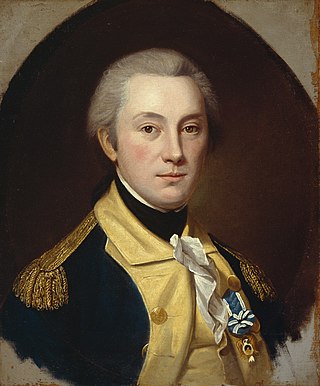
William North was an American soldier and politician.
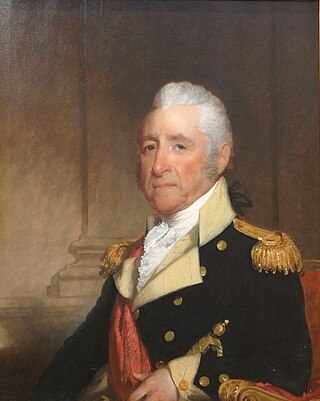
John Brooks was an American doctor, military officer, and politician from Massachusetts. He served as the 11th Governor of Massachusetts from 1816 to 1823, and was one of the last Federalist officials elected in the United States.
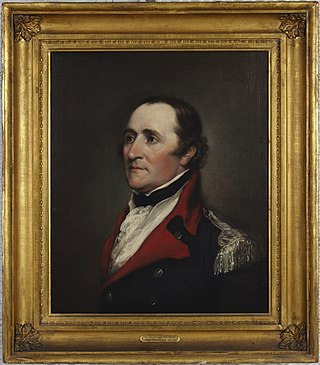
Ebenezer Huntington was an officer in the Continental Army during the American Revolutionary War, and afterwards United States Representative from Connecticut.

Alexander Scammell was a Harvard educated attorney and an officer in the Continental Army during the American Revolutionary War. He was wounded on September 30, 1781, near Yorktown and subsequently died on October 6 in Williamsburg, Virginia, making him, a colonel, the highest ranking American officer killed during the Siege of Yorktown.

Knowlton's Rangers was a reconnaissance and espionage detachment of the Continental Army established by George Washington. Named after its commander, Thomas Knowlton, the unit was formed in 1776.

John Milton Brannan was a career United States Army artillery officer who served in the Mexican–American War and as a Union brigadier general of volunteers in the American Civil War, in command of the Department of Key West in Florida and assigned to Fort Zachary Taylor. Most notably, he served as a division commander of the Union XIV Corps at the Battle of Chickamauga.

Theodore Washington Brevard Jr. was best known for having served as a military officer in the Confederate States Army. During his tenure with the Confederate army, he eventually reached the rank of Brigadier-General. Brevard was captured by the forces of General George Custer and imprisoned at Johnson's Island. He later died in 1882.
The Adjutant General of Maryland is the head military official of the Maryland National Guard, the Maryland Defense Force, and any other military or paramilitary units that may be maintained by the State of Maryland. The adjutant general is responsible for the military department's budget and maintains all State-owned armories in Maryland.

Andrew Henry Embler was an officer in the Union Army during the American Civil War. He received the country's highest award for bravery during combat, the Medal of Honor, for his action during the Battle of Boydton Plank Road in Virginia on October 27, 1864. He would later serve as the Connecticut Adjutant General for two years.
Samuel L. Pitkin, born in Hartford, Connecticut on April 1, 1803, was the Adjutant General for the State of Connecticut from 1837 to 1839. He was a member of the Pitkin family of Hartford, who were very active in politics, the military, industry and banking in early Connecticut. His great-great-great grandfather, William Pitkin, emigrated to the new world from England in 1635 after receiving an inheritance. His grandson, also named William Pitkin would serve as governor of Connecticut Colony from 1766 to 1769.
Justin Hodge, born in Roxbury, Massachusetts on April 21, 1815, was a Connecticut politician who served in the state legislature for many years. He represented his hometown of Barkhamstead as a loyal member of the Democratic Party. He served in the U.S. Army during the Civil War as well as the Mexican War before that. He briefly served as the Adjutant General of Connecticut in 1855.
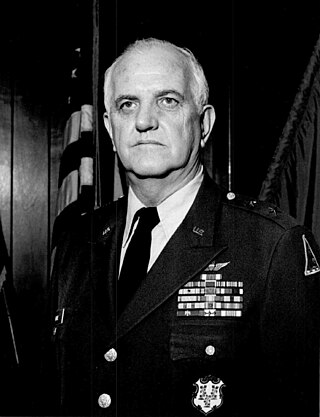
John Francis Gore was an American Army major general. He served in the United States Marine Corps during World War II and with the Connecticut National Guard in the Korean War. His career would culminate with being appointed as the Connecticut Adjutant General in 1982 but would be forced to resign in 1985 amid various scandals.

Edward Elias Bradley was the twenty eighth Adjutant General of the State of Connecticut. Bradley served as president of the Boston Buckboard and Carriage Company. He also headed the News Publishing Company. Bradley during 1901 to 1903 was the president of the New Haven Chamber of Commerce. He was commissioner of the public parks of New Haven from 1888 to 1901, and in 1910 became the president of the parks commission. Bradley was president of the Governor’s staff Association of Connecticut from 1903 to 1911. Bradley was president of the Defender Monument Association, which raised funds for the defenders monument to commemorate the successful defense of the West River. He was also the president of the Young’s Men Institute. In 1883, Bradley represented the town of Orange, Connecticut in the general assembly. Bradley was a Democrat and introduced and advocated the constitutional amendment for biennial sessions of the Legislature, which was accepted. He was the director of New Haven National Bank and was the director of Quinnipiac Fire Insurance.
William Ferson Ladd, born in Spencer, Massachusetts on 14, February 1896, was the thirty-third Adjutant General of the State of Connecticut. During World War I, Ladd was an Army pilot.

Edward Donald Walsh born in Waterbury, Connecticut on April 8, 1917, was the thirty-sixth Adjutant General of the State of Connecticut.
Thomas Hunt (1754—1808) was an American military officer who served in the Continental Army during the American Revolutionary War and later served in the United States Army where he rose to the rank of colonel and served until his death.














